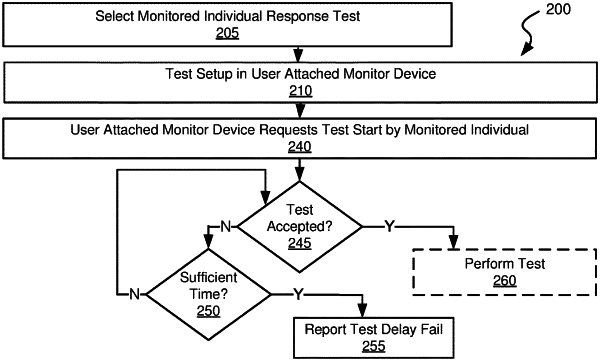| CPC A61B 5/165 (2013.01) [A61B 3/113 (2013.01); A61B 3/14 (2013.01); A61B 5/0077 (2013.01); A61B 5/0205 (2013.01); A61B 5/02055 (2013.01); A61B 5/1112 (2013.01); A61B 5/1113 (2013.01); A61B 5/1118 (2013.01); A61B 5/1176 (2013.01); A61B 5/163 (2017.08); A61B 5/4023 (2013.01); A61B 5/4266 (2013.01); A61B 5/4845 (2013.01); A61B 5/681 (2013.01); A61B 5/6831 (2013.01); A61B 5/6898 (2013.01); A61B 5/7246 (2013.01); A61B 5/7282 (2013.01); A61B 5/742 (2013.01); A61B 5/748 (2013.01); B60W 40/08 (2013.01); G06F 16/54 (2019.01); G06Q 50/265 (2013.01); G06T 7/0012 (2013.01); G06T 7/30 (2017.01); G06V 20/597 (2022.01); G06V 40/19 (2022.01); G09B 19/00 (2013.01); G16H 10/60 (2018.01); G16H 20/70 (2018.01); G16H 40/67 (2018.01); G16H 50/30 (2018.01); G16H 50/70 (2018.01); H04Q 9/00 (2013.01); A61B 5/021 (2013.01); A61B 5/024 (2013.01); A61B 5/0816 (2013.01); A61B 2503/12 (2013.01); A61B 2562/0219 (2013.01); B60W 2040/0836 (2013.01); B60W 2420/42 (2013.01); B60W 2540/223 (2020.02); B60W 2540/225 (2020.02); G01S 19/17 (2013.01); G06T 2207/30041 (2013.01)] | 19 Claims |

|
1. A system for determining a likelihood of impairment, the system comprising:
a user attached monitor device, wherein the user attached monitor device includes:
a strap operable to secure the user attached monitor device to a wrist of a monitored individual;
a sensor;
a display;
a processor; and
a non-transitory computer readable medium including instructions executable by the processor to:
generate a characteristic of the monitored individual based at least in part on data received from the sensor;
generate an impairment value based at least in part on the characteristic of the monitored individual;
receive a test setup request from a central monitoring station via wireless communication network, wherein the test setup request indicates a particular impairment test available on the user attached monitor device;
start the particular impairment test by enabling the sensor and requesting that the monitored individual perform a particular activity; and
report the impairment value generated on the user attached monitor device to the central monitoring station, wherein the impairment value indicates a likelihood that the monitored individual is impaired.
|